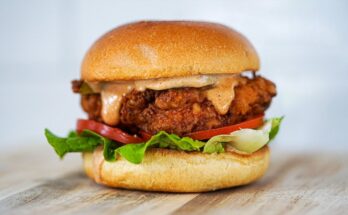Pumpkin Dog Treats Recipe: Making homemade dog treats isn’t just a fun kitchen project—it’s a way to take control of your pup’s health and happiness. Unlike store-bought options that are often loaded with preservatives, artificial colors, and fillers, homemade dog treats let you know exactly what’s going into your furry friend’s body. Think about it—would you rather feed your dog a cookie with ten unreadable ingredients or one with three natural, wholesome ones?
DIY dog treats allow pet owners to cater to specific dietary needs. Whether your pup has allergies, a sensitive stomach, or you simply want to offer them cleaner snacks, homemade treats are the way to go. Plus, crafting treats at home strengthens your bond with your pet—you’re literally cooking with love!
Another huge perk? It saves money. Over time, the cost of high-quality store-bought dog treats adds up. A homemade batch of treats made from pantry staples like pumpkin and oats not only costs less but usually yields a bigger batch. And let’s not forget—you can shape them into cute bones, hearts, or paws for added fun.
So, whether you’re trying to avoid additives or just looking for a healthier snack option, making pumpkin dog treats at home is a win-win. You’ll feel great giving your dog something nutritious, and they’ll love the taste!
Benefits of Pumpkin for Dogs
Pumpkin isn’t just a fall favorite for humans—it’s a superfood for dogs, too. This bright orange fruit is packed with fiber, vitamins, and essential nutrients that support your dog’s digestion and overall health.
One of the biggest benefits of pumpkin is its high fiber content. If your dog struggles with occasional constipation or diarrhea, a bit of pumpkin can help regulate their digestive system naturally. It acts like a broom in their gut, sweeping out the bad stuff and keeping everything moving smoothly.
Pumpkin is also rich in beta-carotene, which the body converts to vitamin A. This nutrient supports vision, skin health, and the immune system. Plus, the natural moisture content in pumpkin can aid in hydration—especially helpful for dogs that aren’t big drinkers.
And let’s not forget—it tastes amazing to most dogs. The sweet, earthy flavor of pumpkin makes it an ideal base for treats. It’s soft, easy to mix, and adds a warm color to the finished snack that even looks delicious.
Lastly, pumpkin is low in fat and calories, making it perfect for pups on a weight-management plan. It fills them up without packing on the pounds, which means more treats, fewer worries.
Ingredients You’ll Need
Choosing the Right Pumpkin
When making dog treats, not all pumpkin is created equal. You’ll want to stick with 100% pure pumpkin puree, which is simply cooked and mashed pumpkin—nothing else. Avoid pumpkin pie filling at all costs. It’s loaded with sugar, spices like nutmeg (which is toxic to dogs), and other additives that aren’t safe for your pup.
You can use canned pumpkin or fresh pumpkin. If you go the fresh route, just roast the pumpkin until soft, scoop out the flesh, and puree it until smooth. But for convenience, canned pumpkin is a time-saving, dog-safe option that works perfectly in recipes.
Pumpkin’s soft texture makes it easy to blend into dough, and it holds other ingredients together beautifully without needing a ton of oil or eggs. It also adds a mild sweetness that makes dogs drool—literally.
Optional Add-Ins for Extra Flavor and Nutrition
While the basic recipe can be as simple as pumpkin, oats, and flour, you can absolutely jazz it up with some pup-approved extras:
- Peanut Butter: A favorite among dogs—just make sure it’s xylitol-free.
- Eggs: Add protein and help bind the dough.
- Oats: Great for fiber and texture.
- Cinnamon: A dash is safe and adds aroma (skip nutmeg!).
- Greek Yogurt: Use plain and unsweetened for a creamy twist.
- Chia Seeds or Flaxseeds: For added omega-3s and fiber.
- Applesauce or Mashed Banana: For natural sweetness and moisture.
Every dog is different, so keep allergies and sensitivities in mind. Introduce new ingredients slowly and always check with your vet if you’re unsure about something.
Tools and Equipment
Basic Kitchen Tools Required
Before you dive into mixing and baking, make sure you have the right tools on hand. Thankfully, making homemade dog treats doesn’t require any fancy equipment—you probably already have most of these items in your kitchen.
Here’s what you’ll need:
- Mixing Bowls: One large bowl for combining ingredients and a smaller one for any add-ins.
- Measuring Cups and Spoons: Accuracy is key for consistent results.
- Wooden Spoon or Silicone Spatula: For mixing your dough without overworking it.
- Rolling Pin: Helps flatten the dough evenly for cutting shapes.
- Parchment Paper: Prevents sticking and makes for easy cleanup.
- Cookie Cutters: Bone-shaped cutters are classic, but hearts, stars, and paws are fun too.
- Baking Sheet: A standard cookie sheet works perfectly.
- Cooling Rack: Allows treats to cool evenly and prevents sogginess.
These tools will make the process smooth and efficient. If you’re planning to bake dog treats regularly, you might even want to dedicate a specific set of tools just for pet-friendly baking.
Best Baking Sheets and Cookie Cutters for Dog Treats
When it comes to baking sheets, opt for heavy-duty, non-stick options. They promote even heat distribution, which ensures that your dog treats bake uniformly—no soggy centers or overcooked edges.
As for cookie cutters, stainless steel is your best bet. They cut cleanly through thick dough and are easy to wash. Silicone molds are another great option if you want 3D-shaped treats. These can add a touch of whimsy to your dog’s snack time.
Fun tip: Try using letter cookie cutters to spell your dog’s name in treat form—it’s adorable and Instagram-worthy.
Having the right tools not only makes the baking process easier but also guarantees more professional-looking results. Your pup may not care about presentation, but let’s be honest—we do.
Step-by-Step Instructions
Step 1: Preparing Your Workspace and Preheating the Oven
The first step in any baking project is preparation. Start by clearing your counter space and gathering all your ingredients and tools. This makes the entire process more enjoyable and efficient—no scrambling for missing items mid-recipe.
Next, preheat your oven to 350°F (175°C). Preheating is crucial to ensure your treats bake evenly from the start. If you put dough into a cold oven, it affects texture and baking time.
Line your baking sheet with parchment paper and set out your cookie cutters, rolling pin, and any measuring tools. Make sure you have clean hands (or wear food-safe gloves) because you’ll be handling dough directly.
Also, double-check that your pumpkin puree is 100% pure—no spices or sugars added. If you’re using eggs, peanut butter, or any extras, measure them out now and place them in small prep bowls. Trust us, a little organization goes a long way.
Finally, keep your dog close by. They’ll love watching the process—and taste-testing, of course!
Step 2: Mixing the Ingredients
Now comes the fun part—mixing the dough. In a large bowl, combine the main ingredients: pumpkin puree, flour, and oats. If you’re including optional ingredients like peanut butter, eggs, or a bit of cinnamon, add them in at this stage.
Basic recipe example:
- 1 cup pumpkin puree
- 2 ½ cups whole wheat flour (or oat flour for grain-free)
- ½ cup rolled oats
- 1 egg (optional, for binding)
- 2 tablespoons peanut butter (make sure it’s xylitol-free)
Use a wooden spoon or your hands to mix everything together. The goal is to form a dough that’s soft but not sticky. If the dough feels too dry, add a tablespoon of water at a time. If it’s too wet, sprinkle in more flour until it firms up.
You want a texture that’s easy to roll out but firm enough to hold its shape when cut. Think of it like playdough—you should be able to mold it without it falling apart or sticking everywhere.
Take your time mixing to ensure even distribution of ingredients. Uneven mixing can lead to crumbly or unevenly baked treats, which we definitely don’t want.
Step 3: Rolling and Cutting the Dough
Once your dough is mixed and ready, it’s time to roll it out and cut it into fun shapes that your dog will love. Lightly flour a clean, flat surface—your countertop or a large cutting board will work perfectly. Then place your dough ball on top and use a rolling pin to roll it out to about ¼-inch thickness.
Don’t roll it too thin, or the treats could burn. Too thick, and they may end up soft in the middle and not crunchy enough for proper storage. Aim for an even thickness to ensure all the treats bake at the same rate.
Now comes the fun part: cutting out the treats! Use cookie cutters to shape your dough into bones, hearts, paws, or even alphabet letters. If you don’t have cookie cutters, no problem—just use a knife to cut the dough into small squares or rectangles. Your dog won’t mind the shape as long as it tastes good!
Keep gathering and re-rolling the scraps until you’ve used up all the dough. This is a great step to get kids involved if you’re making treats as a family project. Just make sure the shapes are small enough for your dog to chew comfortably, especially if you have a small breed.
Place the cut treats on your parchment-lined baking sheet, leaving a little space between each. They won’t spread much, but you want them to have room to cook evenly.
Step 4: Baking to Perfection
Now that your dog treats are shaped and lined up on your baking sheet, it’s time to bake them into crunchy goodness. Slide the tray into your preheated oven and bake at 350°F (175°C) for about 25–30 minutes.
Halfway through the baking time, you can rotate the tray for even baking—especially if your oven has hot spots. The treats should turn a golden-brown color and become firm to the touch. If you want extra crunchy treats (great for dental health and longer storage), you can turn off the oven after baking and let the treats sit inside for another 30–60 minutes while the oven cools down.
As always, keep an eye on the first batch you ever make—your oven’s performance and the thickness of the dough can impact bake time. You don’t want to overbake them and turn them too hard or, worse, burn them.
Once baked, remove the tray from the oven and place it on a cooling rack. Let the treats cool completely before offering one to your pup. Warm treats may be too soft and can burn their mouth, so give them time to harden and reach room temperature.
Step 5: Cooling and Storing
Cooling is a critical step that ensures your pumpkin dog treats have the right texture and longevity. After taking the treats out of the oven, allow them to cool completely on a wire rack. If you skip this step and store them while warm, the residual heat can cause condensation, which leads to soggy treats and potential mold.
Once cooled, store the treats in an airtight container. If you’re planning to use them within a week, a sealed jar or zip-top bag kept in a cool, dry place is fine. For longer shelf life, keep them in the refrigerator for up to three weeks or freeze them for up to three months.
Pro tip: Divide the batch into smaller zip-lock bags before freezing. That way, you can pull out one small portion at a time without exposing the entire batch to moisture.
If you made softer, chewy treats by baking for a shorter time, refrigeration is especially important to prevent spoilage. For crunchy treats, storing them in a dry container at room temperature should suffice for short-term use.
Label your container with the date you made them—it’s easy to lose track, especially when they disappear so quickly thanks to those eager paws.
Storage Tips and Shelf Life
How Long Do Homemade Pumpkin Dog Treats Last?
Once your treats are fully baked and cooled, proper storage is essential to keep them fresh and safe for your dog. Because homemade treats don’t have preservatives like store-bought ones, they won’t last as long at room temperature. But with the right methods, you can extend their shelf life significantly.
If you’ve baked them to a crunchy texture, they’ll last up to 7–10 days when stored in an airtight container in a cool, dry spot. Make sure the container is sealed tightly—exposure to air and humidity can lead to spoilage or mold.
For a longer shelf life, refrigeration is your best friend. Store the cooled treats in a sealed container or resealable bag and pop them in the fridge. They’ll stay fresh for up to three weeks this way.
Want to stock up and not worry about treats for a while? You can also freeze the treats for up to 3 months. Use freezer-safe bags or containers, and consider portioning them out so you only thaw a small batch at a time. Just pull out what you need and let them thaw at room temperature before serving.
It’s a good idea to label your storage bags or containers with the date you made the treats. This helps you keep track and ensures your dog is always eating fresh, safe snacks.
Freezing for Extended Use
Freezing is a fantastic way to keep homemade pumpkin dog treats fresh, especially if you’ve made a large batch. To freeze, place the fully cooled treats in a single layer on a baking sheet and freeze for about an hour. Once they’re frozen, transfer them to a freezer-safe bag or container.
This method prevents the treats from sticking together, so you can grab one or two at a time as needed. When you’re ready to use them, just let them thaw at room temperature for 10–15 minutes. They’ll be just as tasty and safe for your pup to enjoy.
Freezing not only extends shelf life but also helps preserve the flavor and texture of the treats. Plus, frozen treats can be a cooling snack during hot weather—just make sure they’re not too hard if your dog has dental issues.
FAQs about Pumpkin Dog Treats Recipe
Can I use canned pumpkin pie filling instead of pumpkin puree?
No, always use 100% pure pumpkin puree. Pumpkin pie filling contains sugar, spices like nutmeg (which is toxic to dogs), and other additives that can harm your pup.
How often can I feed pumpkin treats to my dog?
Pumpkin treats should be given in moderation. A couple of small treats per day is usually fine for most dogs, but adjust based on your dog’s size, weight, and dietary needs.
Are these treats safe for puppies?
Yes, but in small amounts. Puppies have sensitive stomachs, so start with a tiny piece and watch for any reactions. Always consult your vet for advice on feeding puppies.
What if my dog has a grain allergy?
Use a grain-free flour like oat flour, coconut flour, or almond flour instead of wheat flour. Just note that texture may vary, so experiment to find the best consistency.
Can I substitute other ingredients in the recipe?
Absolutely! You can swap peanut butter with mashed banana, use flax egg instead of regular eggs, or add shredded carrots or apples for variety. Just make sure all ingredients are safe for dogs.
Conclusion
This recipe is flexible, affordable, and super easy to follow. Plus, you get the bonus of seeing your pup’s tail wag with excitement every time you reach for the treat jar. Whether you’re baking for training rewards, holiday gifts, or everyday snacks, pumpkin treats are a safe and nutritious option.
Don’t forget to customize your treats to suit your dog’s preferences and dietary needs. Use grain-free flours, add-ins like flaxseed or chia, and always keep portion size in mind.
By preparing these treats at home, you’re doing more than feeding your dog—you’re giving them a piece of your time and care. And that’s something they’ll always appreciate (even if they show it by begging for more!).



